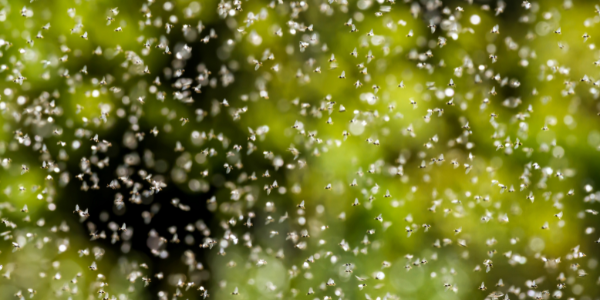
Flying Ants Vs. Flying Termites
For New York homeowners dealing with summer pests, it’s easy to mistake flying ants and flying termites for one another. While each of these insects looks similar and even shares some common behaviors, determining which pest you’re dealing with is key to effectively treating the problem.
Read on to learn the ways these two pests differ so you can determine if you have an ant or termite problem.
What Do Flying Ants Look Like?
Flying ants are a common problem for New Yorkers during the summer months when they’ll likely swarm around your home and yard. Flying ants are easily identifiable by their wings, flat bodies, and six legs. Their abdomens have two parts: the petiole and the postpetiole. The thorax is narrow and small, while the head is large with a pair of long antennae. The most common type of flying ant is the black carpenter ant, which has a large black body and orange head.
What Do Flying Termites Look Like?
Flying termites, also known as termite swarmers, have dark bodies with light-colored wings. These insects shed their wings before entering a new colony as adults. When flying termites swarm, they leave their nests en masse and fly around looking for new places to start new colonies. These swarms can be very large: tens or hundreds of thousands of insects can take flight at once.
Flying termites are the winged reproductive forms of the colony. They are white, about 1/8 inch long with four wings that cover their entire body. These insects have a pair of antennae, which help them sense odors in the air and help them navigate back to their nest. While flying termites have a similar appearance to flying ants, they do tend to have wings that are thicker, as well as an overall darker color.
Behaviors of Flying Ants vs. Termite Swarmers
When an ant is disturbed by human activity, it will often leave its nest and fly off in search of food or shelter elsewhere. This is one way that ants can be seen outside their nest during the winter months when temperatures get too cold for them to survive outdoors (although most species won’t survive long on their own).
Flying termites, on the other hand, swarm at the end of their lifecycle, and will leave their nests for food sources and/or mating opportunities. Unlike ants, who typically only move short distances away from their nests before returning, termites are known to travel further away than ants and stay gone for longer periods of time.
How to Prevent Flying Ants
- Keep your garbage cans clean and tightly sealed.
- Trim shrubbery and other plants back from the house as much as possible.
- Keep firewood, lumber, or other debris away from the home’s foundation.
- Cover food when not in use to prevent ants and termites from foraging it for food. This will also help prevent damage that could be caused by other pests seeking out sources of sugar or protein in your kitchen pantry or cabinets.
- Keep pet food always covered—both indoors and out—to deter flying ants from feeding on it as well!
How to Prevent Termite Activity
- Install a termite treatment system, such as Knockout Pest Control’s preferred solution, the Sentricon Termite Elimination System
- Keep the yard clear of debris, such as fallen leaves, branches, and sticks.
- Eliminate sources of moisture, such as leaking faucets or damp wood.
Knock Out Ants and Termites in Your New York Home
Now that you know how to identify flying ants and termites, it’s time to get rid of them!
The best way to knock ‘em out is with Knockout Pest Control. Our team of licensed technicians will determine which type of insect is infesting your home and provide you with the most effective treatment options to get rid of your pest problems.
Call 1-800-244-PEST for an estimate!


